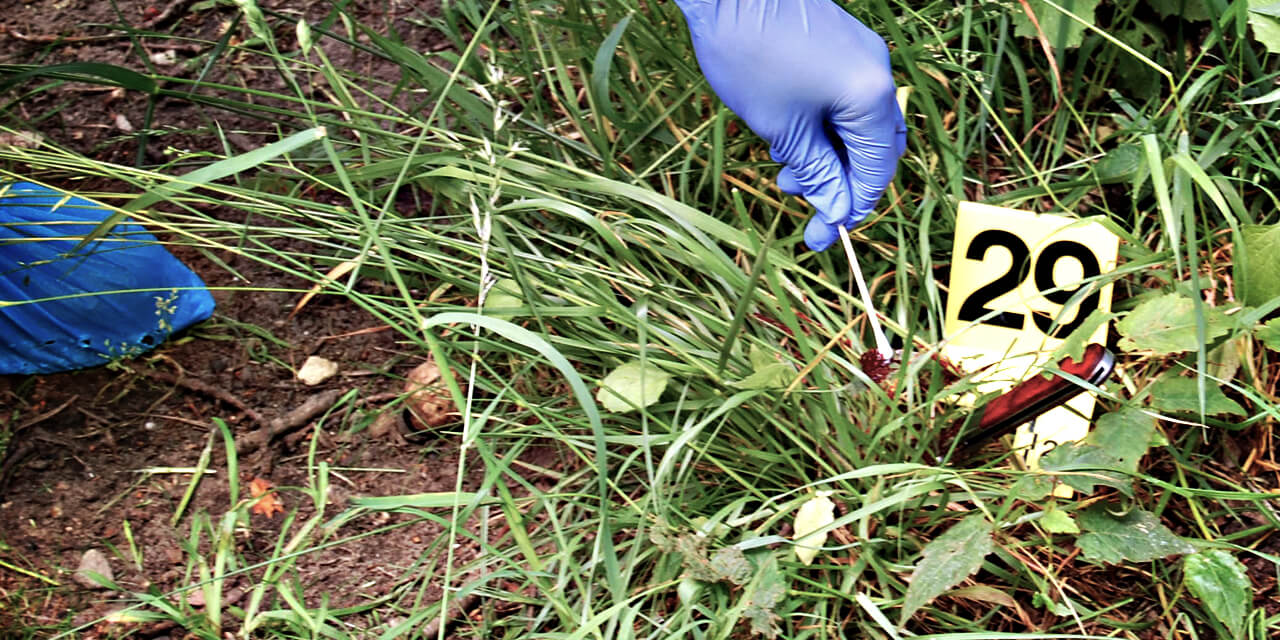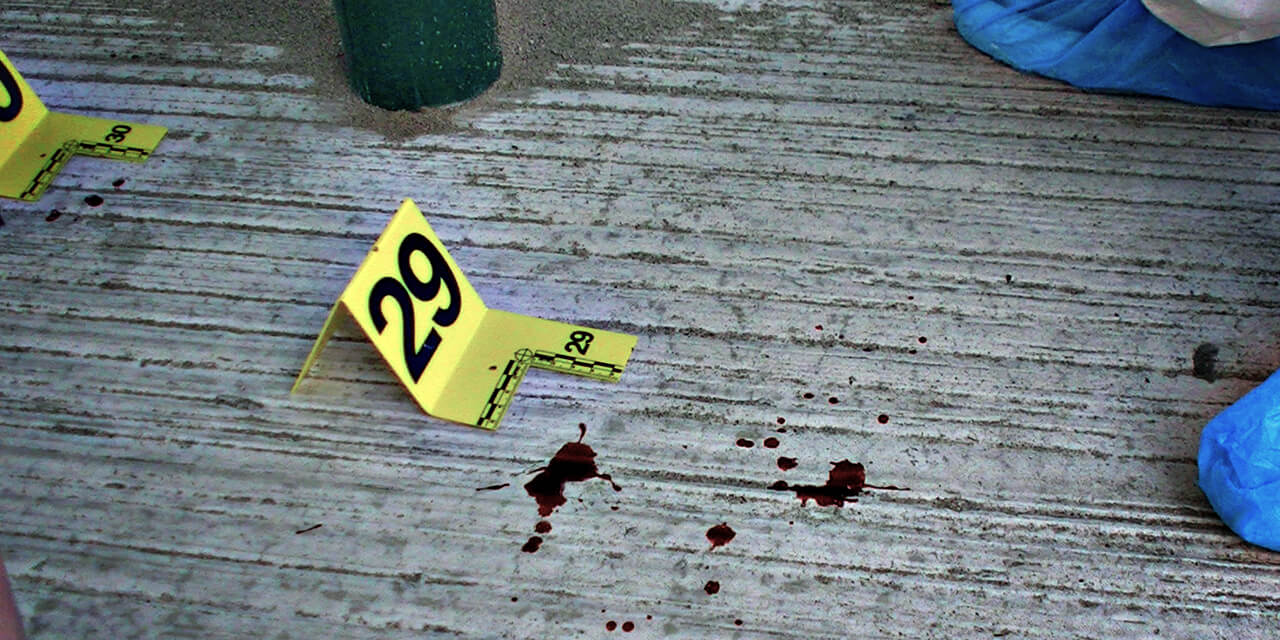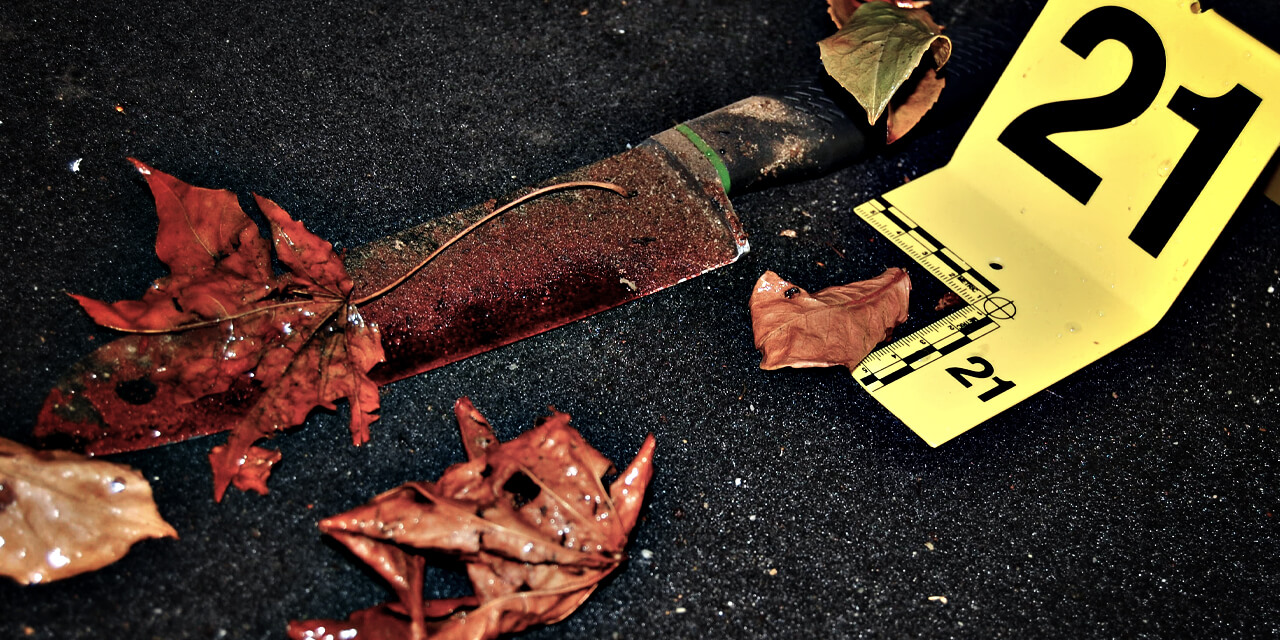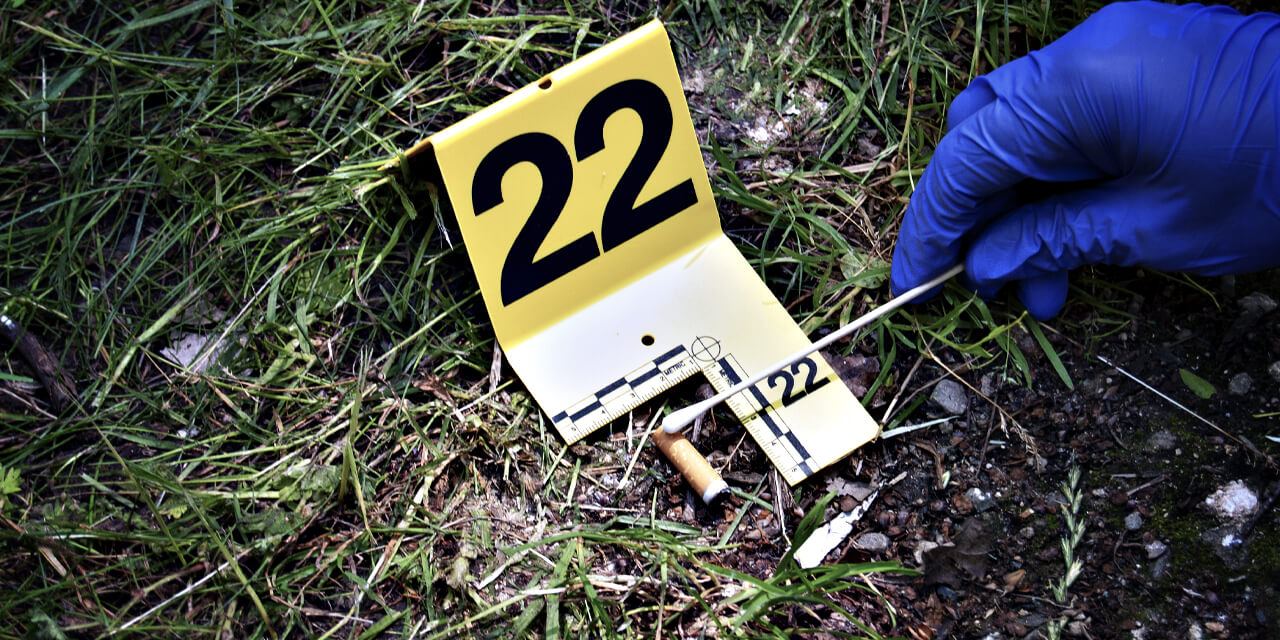Investigation at a Crime Scene

On January 3 at 08:00 AM, the residents of Jan van Korenstraat are awakened by a loud bang. A second one follows shortly. A large crowd gathers outside to see what's going on. The sounds are coming from Mr. De Vries' house. Mrs. Bakker is already dialing 112 on her mobile phone.
Not long after, the police, along with a team of forensic investigators, arrive to investigate the crime scene. But how is a crime scene precisely investigated?
During the investigation at a crime scene (CS), many things must be taken into account. The CS must be preserved as much as possible so that later investigations do not yield incorrect results. Photos are taken, logbooks are maintained, and evidence must be collected, labeled, and securely stored. But it all begins with cordoning off the area and restricting access.

Cordoning off is done in a way to ensure that nobody can enter the CS without authorization. Two areas known as the inner and outer cordons are cordoned off using the well-known police tape. The inner cordon is the most important part of the CS. This is the core where the crime took place. In our example, this would be Mr. De Vries' house and garden. The outer cordon is the surrounding area indirectly related to the inner cordon. It's possible that some clues might be found here, but fewer than in the inner cordon. In the example, this could be part of the sidewalk. To make sure nobody enters a cordon without permission, a police officer is stationed outside each cordon. They maintain a logbook of everyone entering the CS.
After cordoning off, it's time to start the investigation. First, the CS is surveyed, and overview photos are taken by the forensic photographer so that it's clear how everything was found later. These photos are taken from both the inner and outer cordons. They should be taken from a sufficient distance to map the entire CS. Initial observations are also noted. When entering the CS, safety is always a top priority. This means paying close attention to where one can and cannot walk. This can be especially important if there has been a fire somewhere.

Then it's time to collect evidence. Various search patterns have been developed to find evidence and clues. The choice of pattern depends on the condition of the CS. If it's a CS where many potential clues might be found, a grid pattern or spiral pattern is often used. The grid pattern involves searching the CS along imaginary lines first horizontally and then vertically. This ensures highly precise work. The disadvantage is that potential clues may be compromised during the first search.

With a spiral pattern, there are two possible methods: one starting from the center of the CS and one starting from the outside of the CS. Both have advantages and disadvantages. Starting from the inside provides a better overview of the CS and can often lead to finding important clues faster, as they are usually in the center. However, you need to walk to the center and there's a chance of compromising potential evidence or clues. This can be countered by starting from the outside. The downside is that it may take longer to find important clues, delaying any subsequent investigation into the found clues.
The last two search patterns are the simplest but also the least accurate. They are mainly used at crime scenes where little evidence is expected to be found. These two patterns are called the linear pattern and the zone pattern. The linear pattern is the same as the grid pattern but only in one direction. The zone pattern divides the CS into four zones where a free search for clues is allowed. Each piece of evidence is documented with a unique code, called a Scene Identification Number (SIN). This code is specific to that piece of evidence, allowing for precise tracking of its history and location. These SINs are generated in advance so that they do not overlap with SINs from other cases. They are also included on the sticker attached to the evidence, which contains a special RFID chip for easy registration.

A logbook is maintained during evidence collection. This is part of the Chain of Custody (COC). It's essential to keep this logbook well-maintained to ensure the completeness of the COC. The COC guarantees the authenticity of the evidence. If not properly maintained, evidence can be declared invalid due to potential tampering. To keep this logbook, a Scene Identification Number (SIN) is assigned to each piece of evidence found. This is a unique code that only that piece of evidence has. It allows for precise tracking of what happened with that specific piece of evidence and where it has been. These SINs are generated in advance to avoid overlapping with SINs from other cases. These SINs are also included on the sticker attached to the evidence, which contains a special RFID chip for easy registration.
In the logbook, it's also recorded who collected the evidence, what actions everyone took, who made the report, when the report was made, the location of the CS, the time the first officer arrived, and which members of the forensic team are present. Additionally, a sketch of the CS is made for later reference. The photos taken are also documented with their code, time, and the name of the photographer in a separate logbook.

Once all of this is done, the investigation is concluded, and evidence is transported to the NFI (National Forensic Institute) where it is registered and safely stored. The logbooks are also handed over, marking the end of the CS investigation.
The investigation on Jan van Korenstraat lasts only a few hours. The police keep everyone at a distance, take witness statements, while the investigators conduct the investigation. Ultimately, further investigation reveals that Mr. De Vries' son incurred debts within the criminal circuit. He asked his father to help him repay them. When his father refused, his son shot him. The son has been arrested and the residents of Jan van Korenstraat can sleep peacefully again.
Solve a Murder Yourself?
Think you have what it takes to solve a murder on your own? Check out our open murder cases to solve independently or as a team.
